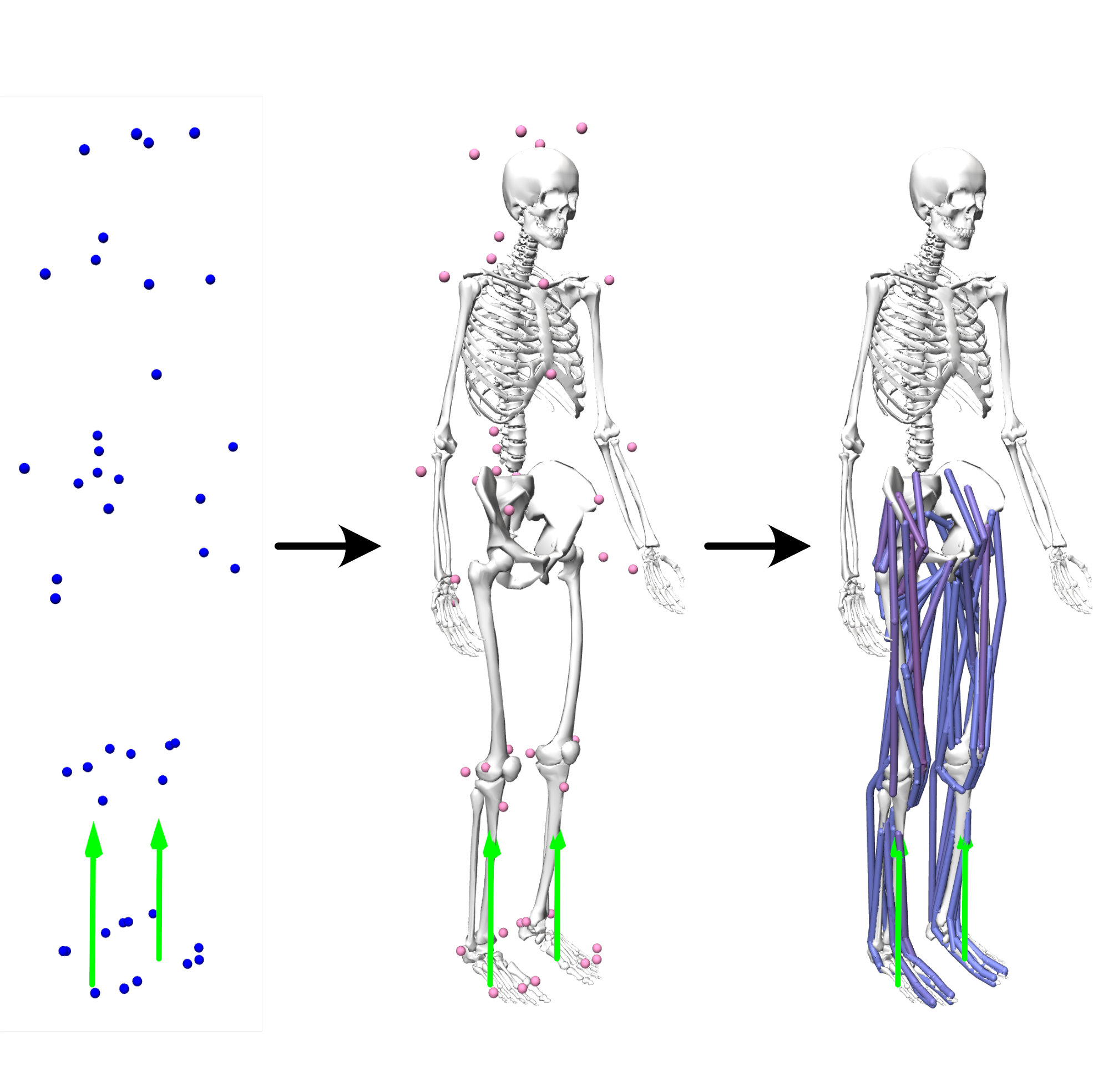Energetic optimality of standing and gait initiation
Experimental and musculoskeletal modeling study on the energetic costs that drive standing and gait intitiation.

Status: Preprint
People: Matto Leeuwis, Nikki van Aerts, Ajay Seth, Patrick Forbes
Topics: posture,, biomechanics,, OpenSim,, gait
Date:
Link: External →
Humans typically select movements that minimize energetic cost, a principle most clearly observed during locomotion. Whether such optimization of energy expenditure also governs standing balance remains unclear because its energetic cost has not been systematically quantified across a range of natural postures. Moreover, because standing is often the resting state from which most walking begins, the optimization of posture may also reflect the energetic demands of initiating gait. In this study, we use a combination of indirect calorimetry and musculoskeletal simulations to characterize the energetic cost of standing and gait initiation across natural standing postures and investigate whether humans optimize energy expenditure under these conditions. In Experiment 1 (N = 13), we measured metabolic cost at preferred and six different prescribed whole-body orientations. Energy expenditure was lowest at a slight anterior orientation (1.15°) and increased monotonically with whole-body angle, rising twice as fast posteriorly compared to anteriorly. This asymmetry challenges the common modeling simplification that effort is symmetric and linear or quadratic with lean angle. Furthermore, participants preferred body orientations (1.50 ± 0.73°) with similar energy expenditure to the minimum-cost orientation but with significantly more postural variability, suggesting that strict postural regulation was not necessary for energy-optimal control. In Experiment 2 (N = 20), participants initiated forward and backward walking from preferred or prescribed lean orientations. Participants did not alter their standing posture before expected gait initiations in the forward or backward direction, consistent with musculoskeletal simulations showing that leaning further in the anticipated direction did not significantly improve gait initiation time or energetic costs. Together, these findings suggest that postural strategies optimize energy efficiency when permitted by the demands of movement readiness. Our study quantifies the energetic cost landscape that governs human postural control, challenges widely used inverted pendulum estimations of this cost, and offers an empirical foundation for developing more accurate simulations of posture and energy expenditure.